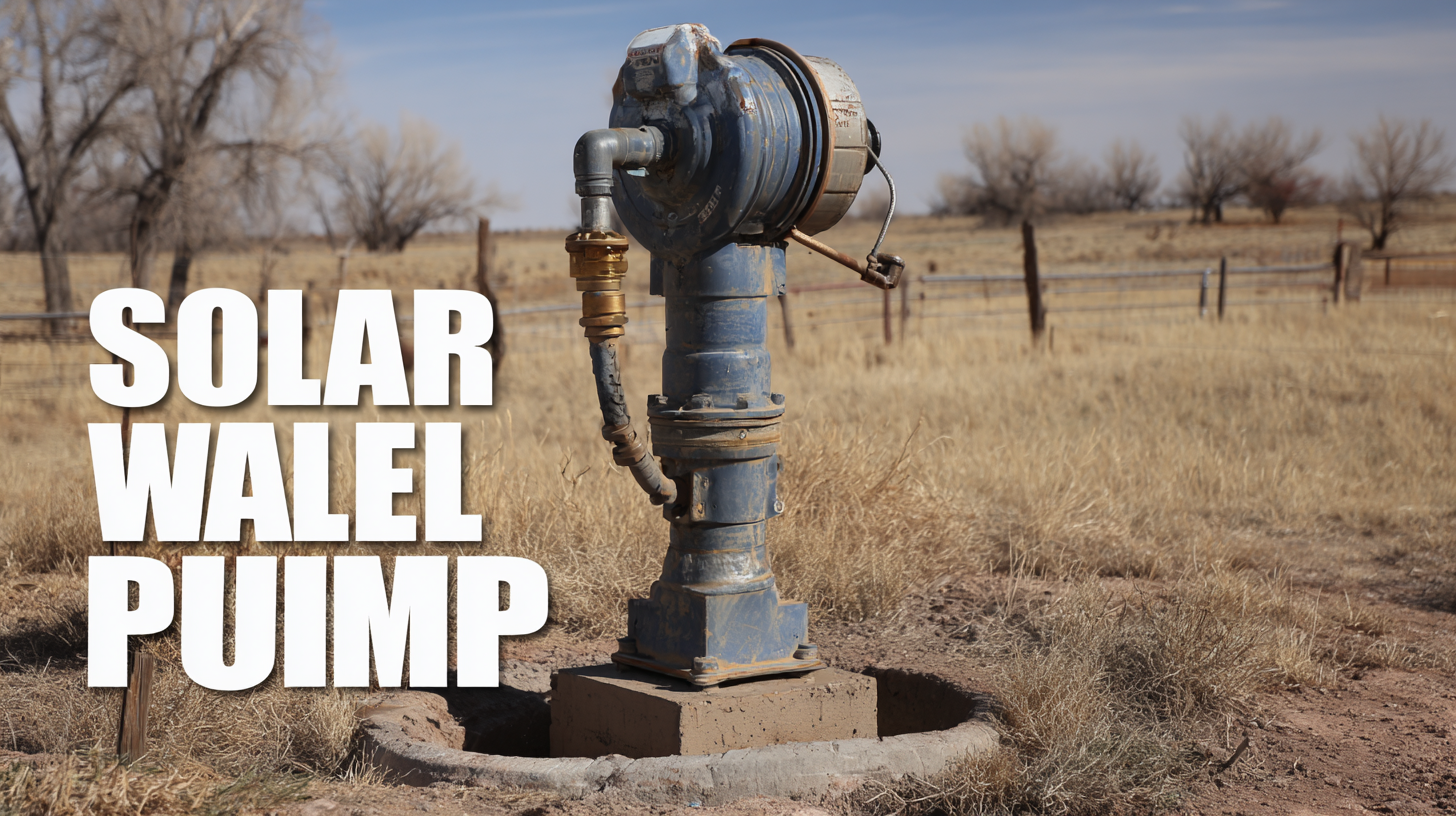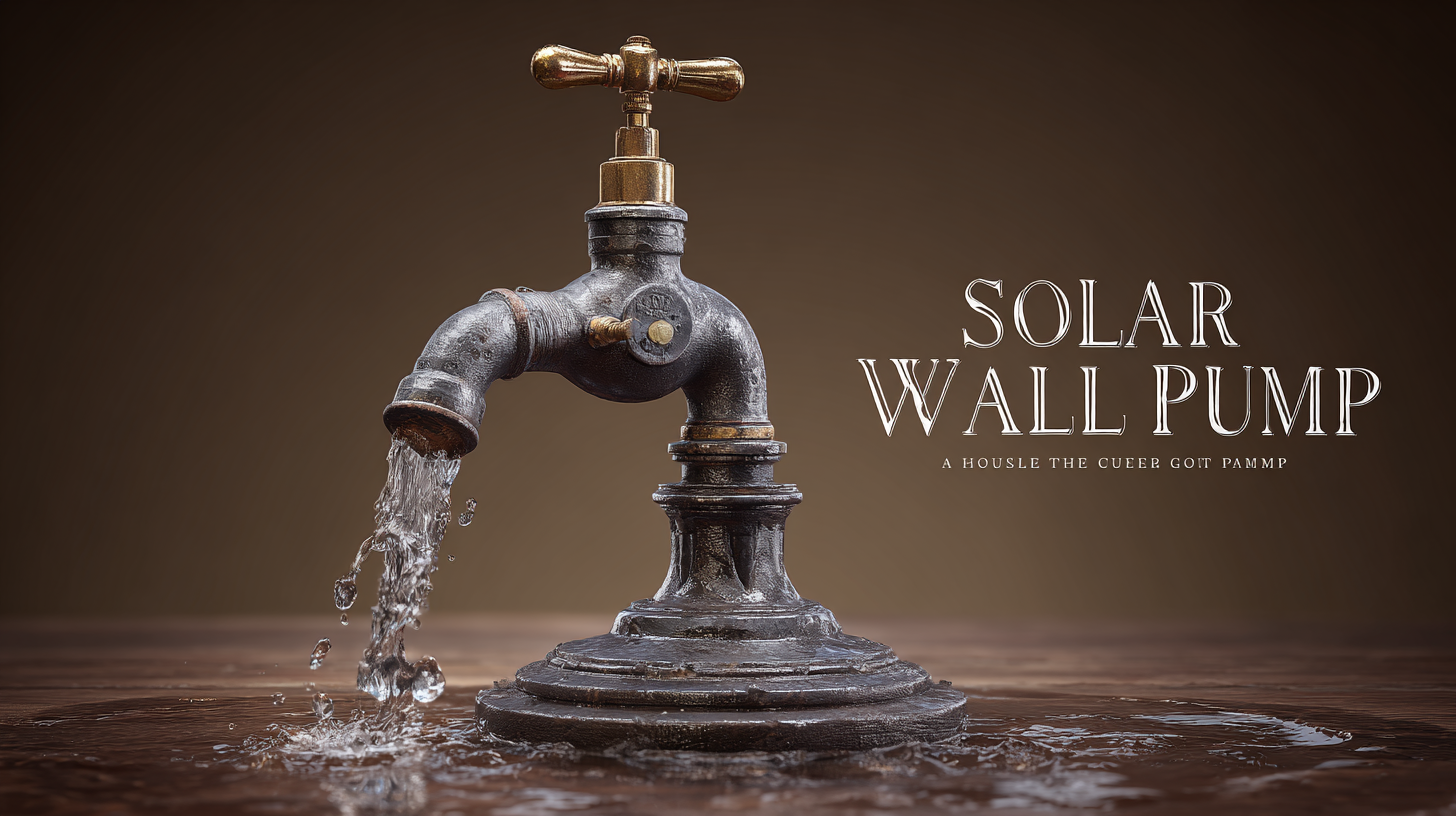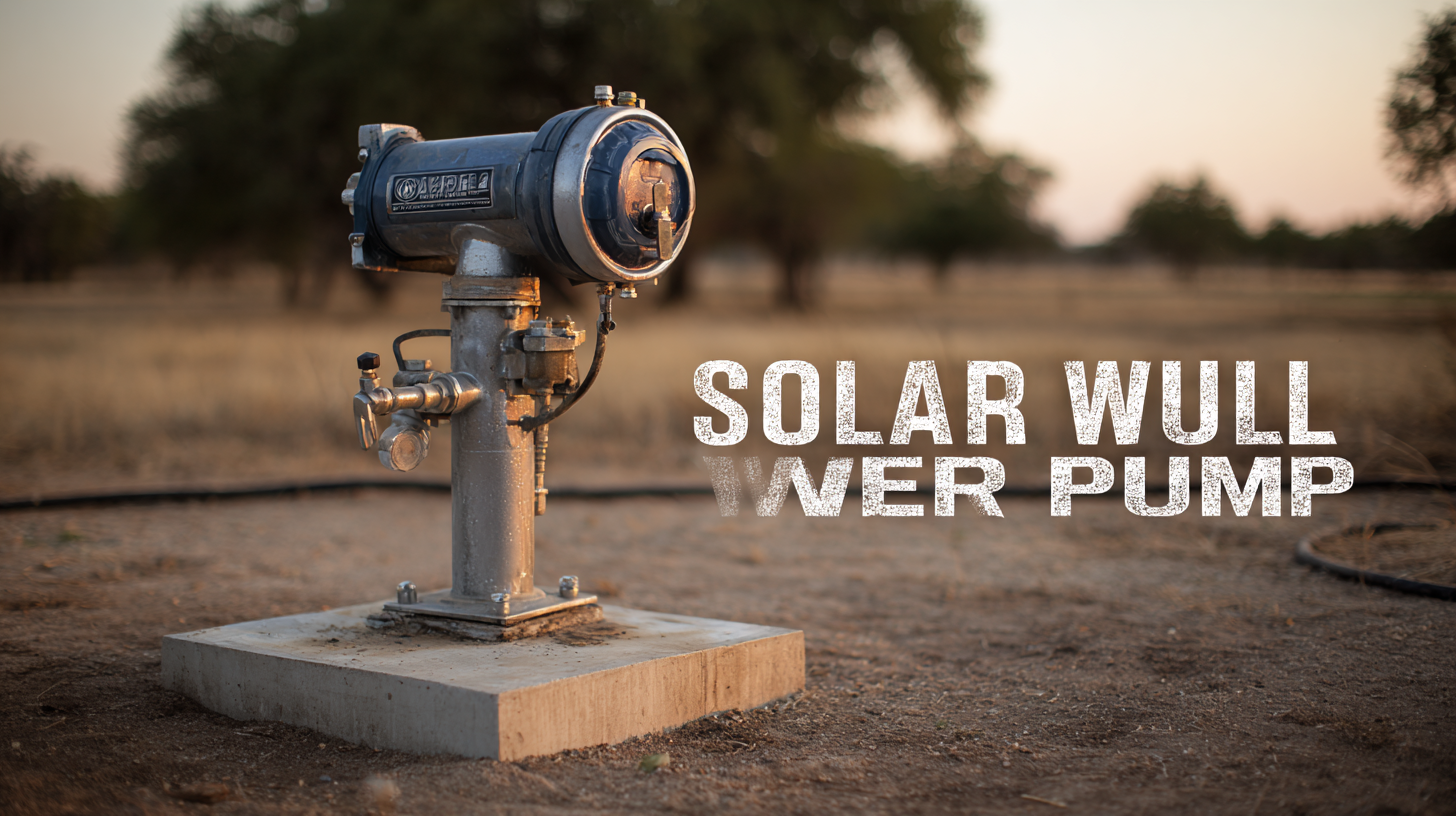The Ultimate Guide to Choosing the Best Solar Well Pump for Efficient Water Management
In recent years, the adoption of renewable energy solutions has gained momentum, with solar technology leading the charge. Among these innovations, the Solar Well Pump has emerged as a crucial tool for efficient water management, particularly in rural and agricultural settings. According to a report from the U.S. Department of Energy, solar-powered water pumping systems can reduce operational costs by up to 80% compared to traditional diesel-powered pumps. Furthermore, the global market for solar water pumps is anticipated to grow significantly, projected to reach $1.4 billion by 2027, driven by increasing awareness of sustainable practices and the need for efficient resource management. This guide will help you navigate the essential factors to consider when choosing the best Solar Well Pump tailored to your specific needs, ensuring not only efficiency but also sustainability in your water management efforts.

Factors to Consider When Choosing a Solar Well Pump for Your Needs
When selecting the best solar well pump, there are several critical factors to consider to ensure it meets your specific water management needs. First and foremost, assess the depth of your well and the intended water usage. Pumps come in various types, including surface and submersible models, each suitable for different well depths. Make sure to choose a pump that can efficiently operate at the depth you require.
Tips: Check the flow rate and the lift capacity of the pump to guarantee it delivers enough water for your needs. A solar well pump with adjustable flow settings can provide additional flexibility based on daily water requirements.
Another important factor to consider is the solar energy system. Ensure that you select a pump paired with a solar panel that can produce sufficient energy to operate the pump effectively. The size of the solar panel needs to align with the pump’s power requirements for optimal performance.
Tips: Evaluate your location’s solar potential; using a pump with a battery backup can ensure reliable water access, even during periods of low sunlight. Always choose durable and weather-resistant materials to extend the lifespan of your solar well pump.

Identifying Reliable Suppliers for Solar Well Pumps
When it comes to selecting a solar well pump, partnering with reliable suppliers is crucial for ensuring optimal performance and longevity of the system. First and foremost, it's important to conduct thorough research on potential suppliers. Look for companies with a solid track record and extensive experience in the solar pump industry. Reviews and testimonials from previous customers can provide valuable insights into the supplier's reliability, product quality, and customer service.

Additionally, consider suppliers that offer comprehensive technical support and service options. A good supplier should not only provide high-quality products but also be willing to assist with installation and maintenance. They should have knowledgeable staff who can answer any questions and help troubleshoot issues that may arise. Furthermore, look for suppliers who can provide warranties or guarantees on their products. This not only demonstrates confidence in their offerings but also gives you peace of mind knowing that you are protected against potential defects. By focusing on these aspects, you can ensure that your investment in a solar well pump is well-placed and supports your water management needs efficiently.
Comparative Analysis of Different Types of Solar Well Pumps
When selecting the best solar well pump for efficient water management, it’s essential to understand the various types available in the market. Each type serves different needs, from submersible pumps that operate underwater to surface pumps designed for easier maintenance. A comparative analysis reveals that submersible pumps are typically more efficient for deep wells, as they push water up to the surface, while surface pumps are ideal for shallower water sources, providing easier access for repairs and upgrades.
Tips: When considering your options, evaluate the depth of your well and the amount of water you require daily. This will help in determining whether you need a higher flow rate, which is often available in submersible models, or if a surface pump would suffice for your needs. Additionally, consider the solar panel output needed to effectively power the pump based on its power requirements and your location's sunlight availability.
Another crucial factor is the material and durability of the pump. Plastic pumps may be cost-effective but can be less durable than stainless steel or cast iron alternatives, particularly in harsh environments. Investing in a robust pump will ensure longevity and save costs in the long run. Always check the warranty and support options available from the manufacturer to safeguard your investment.
The Ultimate Guide to Choosing the Best Solar Well Pump for Efficient Water Management
| Type of Solar Well Pump | Power Output (Watts) | Max Head (Feet) | Flow Rate (GPM) | Battery Backup | Price Range (USD) |
|---|---|---|---|---|---|
| Submersible Pump | 100 - 300 | 60 - 200 | 1 - 10 | Yes | 300 - 800 |
| Surface Pump | 200 - 500 | 30 - 100 | 2 - 20 | Yes | 500 - 1200 |
| Hybrid Pump | 250 - 600 | 50 - 150 | 3 - 15 | Yes | 700 - 1500 |
| DC Solar Pump | 100 - 250 | 40 - 120 | 1 - 12 | No | 200 - 700 |
Maintenance Tips for Enhancing Solar Well Pump Efficiency
To ensure optimal performance of your solar well pump, regular maintenance is essential. According to the U.S. Department of Energy, neglecting maintenance can reduce pump efficiency by up to 20%. One key maintenance tip is to clean the solar panels regularly, as a buildup of dirt and debris can significantly impede energy production. Studies indicate that even a 10% reduction in sunlight efficiency can lead to a proportional decrease in pump output, particularly during peak usage periods.
Another critical aspect of maintenance involves checking the pump and piping for leaks. The Irrigation Association reports that leaks can waste up to 30% of water, which not only disrupts your water management system but also places unnecessary strain on the pump. Periodically inspecting the fittings and connections can help mitigate this risk. It's also advisable to monitor the water level in the well; a decline can indicate that your system is running lower than optimal, prompting timely interventions to maintain efficiency. By adhering to these maintenance tips, you can enhance the longevity and effectiveness of your solar well pump.
Cost-Effective Strategies for Installing Solar Well Pumps
Installing solar well pumps is a smart move for anyone looking to enhance water management while also seeking cost-effective solutions. According to industry reports, the initial investment for solar pumps can be offset by savings on electricity costs; they can save homeowners up to 90% on energy expenses compared to traditional pumps. Additionally, the average return on investment (ROI) for solar well pumps can be realized within three to five years, making them an increasingly appealing option for those in agricultural and residential settings.
When considering the installation of a solar well pump, it's crucial to assess the specific water needs and location. Research shows that selecting the right pump size and solar panel capacity significantly impacts efficiency and overall performance. For instance, a properly sized solar pump can increase water flow rates by 30-50%, ensuring adequate water supply for irrigation or domestic use. Moreover, with advancements in solar technology, such as the development of high-efficiency photovoltaic panels, the integration of these systems has become more affordable and feasible than ever. Embracing these cost-effective strategies not only contributes to sustainable water management but also promotes significant long-term savings.
The Ultimate Guide to Choosing the Best Solar Well Pump
This chart illustrates the cost-effectiveness of various solar well pump systems, represented in terms of initial investment and long-term savings over a 10-year period. The data includes three common pump sizes: small (0.5 HP), medium (1 HP), and large (1.5 HP).
Contact Details
Address:
Solar Pump Solutions,
Borrisokane, Co. Tipperary, Ireland.
